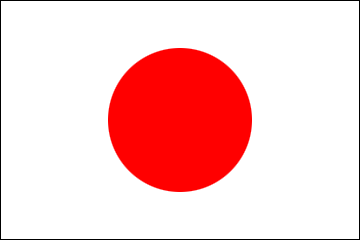Railway stations in the Prairie
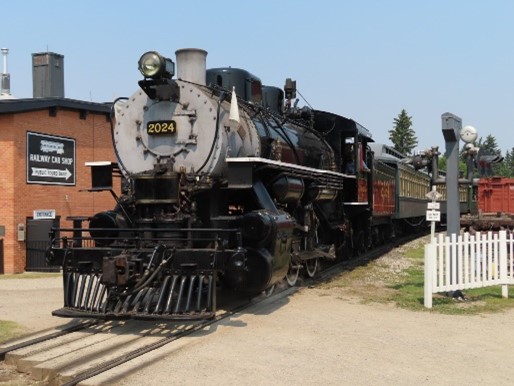 As the fourth part of the series, the office would like to twist the topic for a change and touch upon railways in the Prairies. (Right: A steam locomotive running at Heritage Park in Calgary)
As the fourth part of the series, the office would like to twist the topic for a change and touch upon railways in the Prairies. (Right: A steam locomotive running at Heritage Park in Calgary)
As it is well known, when British Columbia joined the Confederation in 1871, a condition was to construct a trans-continental railway within ten years.
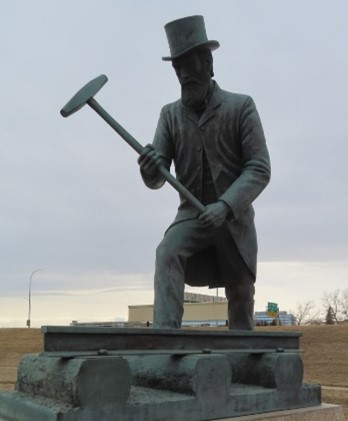 The Canadian Pacific Railway (CPR) started its construction in 1881, it reached Calgary in Summer, 1883 and then, drove in the final and ceremonial railway spike titled the “Last Spike” by Mr. Donald Alexander Smith on November 7th,1885 at Craigellachie, B.C. (Right: Mr. Smith’s statue at the Military Museums in Calgary). The first passenger train left Montreal on June 28th,1886 and arrived at Port Moody, B.C. on July 4th.
The Canadian Pacific Railway (CPR) started its construction in 1881, it reached Calgary in Summer, 1883 and then, drove in the final and ceremonial railway spike titled the “Last Spike” by Mr. Donald Alexander Smith on November 7th,1885 at Craigellachie, B.C. (Right: Mr. Smith’s statue at the Military Museums in Calgary). The first passenger train left Montreal on June 28th,1886 and arrived at Port Moody, B.C. on July 4th.
Since then, between the late 19th and 20th centuries, railways played a significant role in the Prairies’ development. To meet the demand from a vast number of incoming immigrants, companies started to construct many railway lines. One of them was a line which reached Prince Rupert of the West Coast via Jasper in 1914. However, ill-planned proliferation and the First World War led to the companies’ deterioration of profits. To solve the issue, nationalization of all railways, except for the CPR was recommended, and by the 1920’s, the Canadian National Railway (CN, established in 1919) unified as one. (Later, the CN was privatized in 1995.)
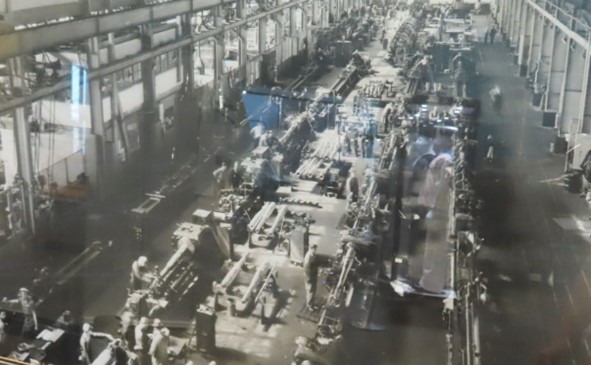 During the time of the First and Second World Wars, railways were used to transport soldiers and equipment. The CPR’s Ogden Shops in Calgary produced military equipment such as naval guns. (Right: The Ogden Shops in 1940. A display at the Military Museums in Calgary.)
During the time of the First and Second World Wars, railways were used to transport soldiers and equipment. The CPR’s Ogden Shops in Calgary produced military equipment such as naval guns. (Right: The Ogden Shops in 1940. A display at the Military Museums in Calgary.)
After the Second World War, train transport demand for passengers decreased. Now, most railway transportation is of freight of natural resources and grains, which has relative competitiveness to other measures (except some passenger train services for tourism).
Now, let us look at some railway-related heritages in the Prairie.
First, there are some places with Japanese names along the CN line in Saskatchewan. During the Japanese-Russo War, 1904-05, Japan was a British ally. (”The Japanese-Anglo Alliance”.) This caused the popularity of Japan among the people in parts of the British Empire, and praise for Japan’s victory on the war. In Saskatchewan, three hamlets (Togo (named after Marshal-Admiral Heihachiro Togo), Kuroki (Army General Tamemoto Kuroki), Mikado (The Emperor)), a regional park (Oyama (Field Marshal General Iwao Oyama)) and a siding track (Fukushima (Army General Yasumasa Fukushima )) were given Japanese names. (Source: The Japanese Association for Canadian Studies.)
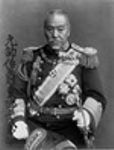 |
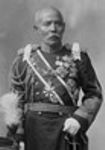 |
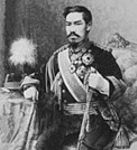 |
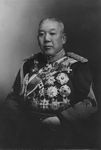 |
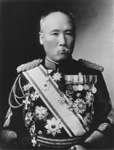 |
Togo |
Kuroki |
Meiji |
Oyama |
Fukushima |
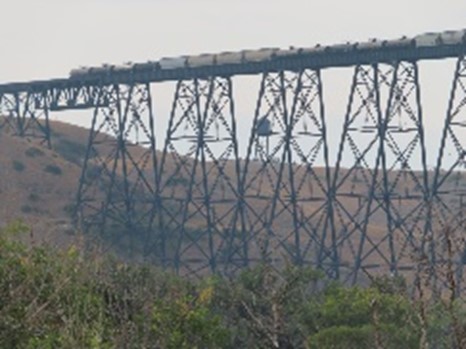 Next comes the Lethbridge Viaduct, also known as “the High-Level Bridge” (length: 1,624m, height: 96m) over the Oldman River valley, Alberta. This is the world’s largest trestle bridge and has been under use since November 3rd, 1909. Some Japanese workers joined the construction.
Next comes the Lethbridge Viaduct, also known as “the High-Level Bridge” (length: 1,624m, height: 96m) over the Oldman River valley, Alberta. This is the world’s largest trestle bridge and has been under use since November 3rd, 1909. Some Japanese workers joined the construction.
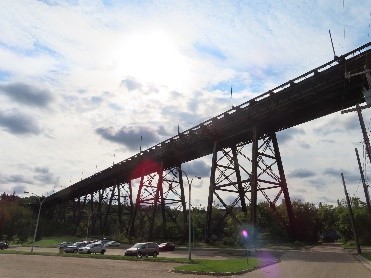 Edmonton also has a high-level bridge (length: 777m) over the North Saskatchewan River valley. This two-story bridge was built for the usage of both railways (CPR and streetcars) and vehicles (there is a sideway beside the vehicles lanes) and opened in 1913. The only trains that are still in operation are streetcars for tourists.
Edmonton also has a high-level bridge (length: 777m) over the North Saskatchewan River valley. This two-story bridge was built for the usage of both railways (CPR and streetcars) and vehicles (there is a sideway beside the vehicles lanes) and opened in 1913. The only trains that are still in operation are streetcars for tourists.
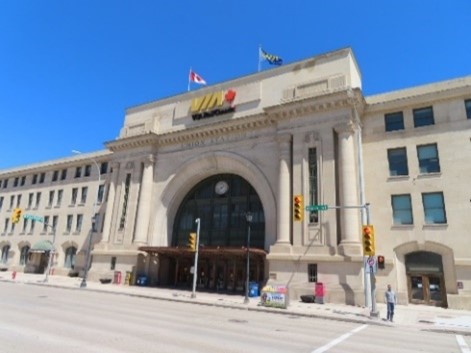 In Winnipeg, we can visit Union Station and it is a Beaux-Art style. It also houses the Winnipeg Railway Museum. The construction was a joint project by then-Canadian Northern Railway, National Transcontinental, Grand Trunk Pacific Railway, and the Dominion government. The Station started its operation in August 7th, 1911. (Official opening was on June 24th, 1912.) It once housed a branch office of the Canadian National Railway (CN). Warren and Wetmore, which was responsible for the Grand Central Terminal in New York, designed for the Station. This is one of the biggest train station buildings in western Canada.
In Winnipeg, we can visit Union Station and it is a Beaux-Art style. It also houses the Winnipeg Railway Museum. The construction was a joint project by then-Canadian Northern Railway, National Transcontinental, Grand Trunk Pacific Railway, and the Dominion government. The Station started its operation in August 7th, 1911. (Official opening was on June 24th, 1912.) It once housed a branch office of the Canadian National Railway (CN). Warren and Wetmore, which was responsible for the Grand Central Terminal in New York, designed for the Station. This is one of the biggest train station buildings in western Canada.
Then comes some train stations in Alberta.
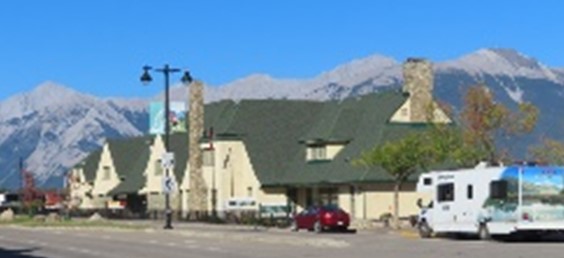 |
 |
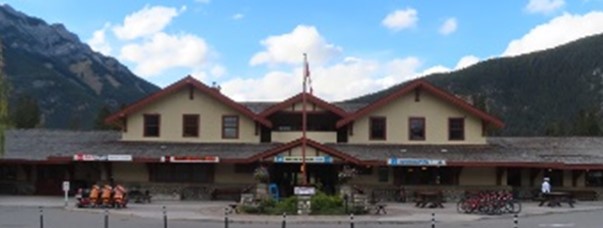 |
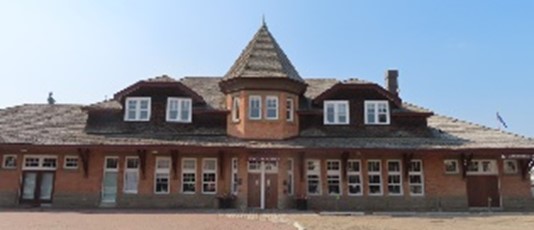 |
 |
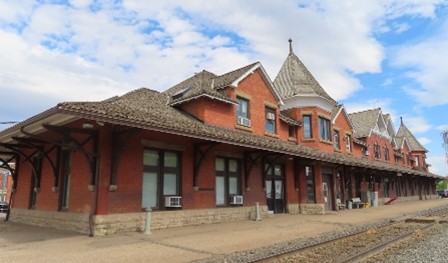 |
We can also see some stations which were originally built in other parts of Southern Alberta at the Heritage Park in Calgary.
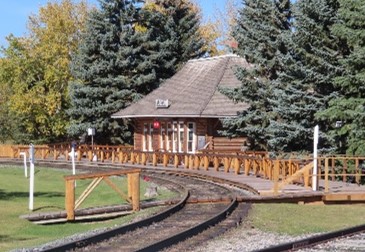 |
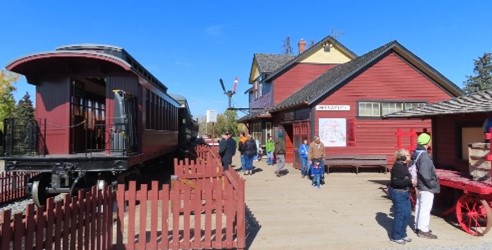 |
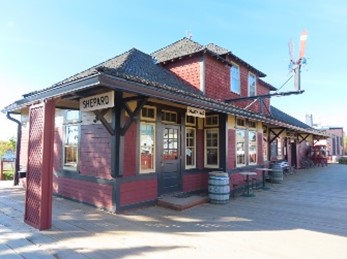 |
(Built around 1890) |
(built in 1910) |
(built in 1910) |
Lastly, let us look at the Calgary train station. The first station was said to be small. But Calgary’s development required a larger station and so the second station was built in 1893. The Railway Café (below) at Heritage Park in Calgary is a reproduction of the second station.
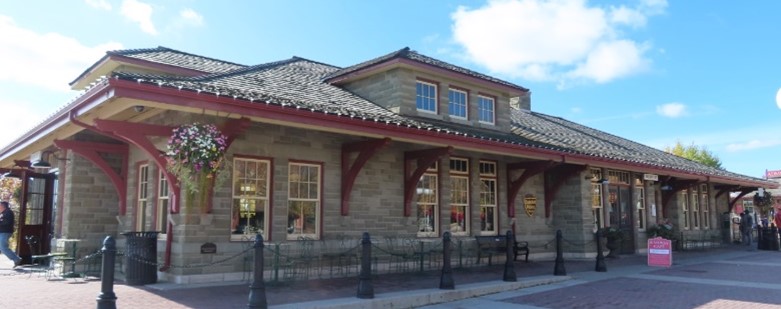
Later, this building did not meet the capacity requirement, so it had to be demolished. After the demolition of the building, its materials were relocated to High River and Claresholm (both located south of Calgary) to build each town’s railway station. The third Calgary station was built in 1911, and then, a gorgeous hotel, the Palliser Hotel (now called the Fairmont Palliser) was constructed in 1914 next to the station.
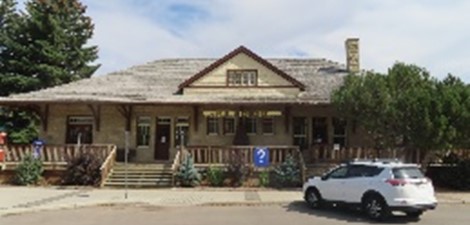 |
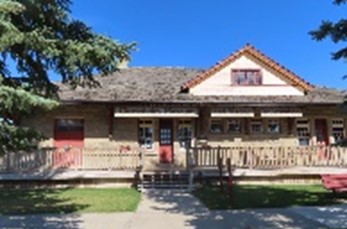 |
(Now, the Museum of High Wood) |
(Now, the Claresholm & District Museum) |
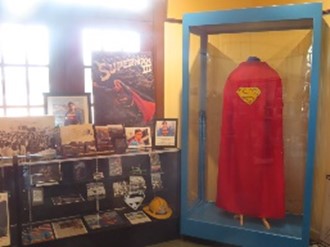 This is off-topic, but the Museum of High Wood has a film-related display, including the Superman’s cape (used in “Superman III". See the left picture).
This is off-topic, but the Museum of High Wood has a film-related display, including the Superman’s cape (used in “Superman III". See the left picture).
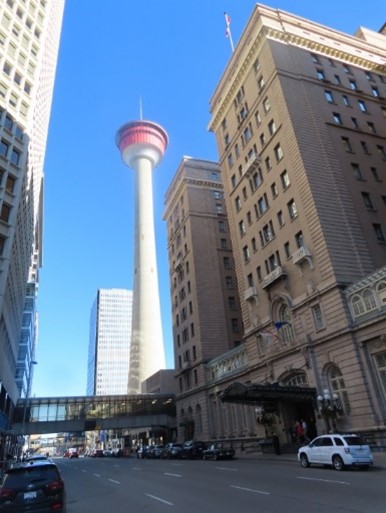 Though the third station was large and an excellent one, it was destined to be demolished. To celebrate Canada’s centennial, then-Husky Oil and CPR demolished the building and started to construct the Calgary Tower (called the Husky Tower at the time) and a complex facility, which incorporated a passenger train station. The Tower was officially opened on July 28th, 1968. (Later in January 1990, the facility ceased to function as a passenger train station.)
Though the third station was large and an excellent one, it was destined to be demolished. To celebrate Canada’s centennial, then-Husky Oil and CPR demolished the building and started to construct the Calgary Tower (called the Husky Tower at the time) and a complex facility, which incorporated a passenger train station. The Tower was officially opened on July 28th, 1968. (Later in January 1990, the facility ceased to function as a passenger train station.)
